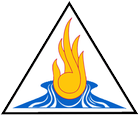This information is transcribed from the Museum of Ayurveda in Kerala.
Did you know that pulse diagnosis has been used in Ayruveda for less than one thousand years?
It’s roots in Ayurveda will surprise you. The following information is displayed on a board in the Museum of Ayurveda…
Sargadhra Samita in the 14th Century is the first Ayurvedic Treatise to describe the Nadi Pareeksha (pulse diagnosis). That means that within the whole 5000 year history of Ayurveda, pulse reading is only 700 years old!
When the Moguls invaded and settled in North India, they came via Persia and brough Persian physicians with them.
These physcians were experts in pulse reading. This was a positive outcome of social rerstriction.
Women were covering the whole of their bodies with cloth and did not expose their body or face even before the physician. The only available exposed area was the hand and hence the physicians had to restrict their physical examination to the hand and hence pulse reading became the most important mode of examination.
Ayurveda physicians studied the methods of pulse reading from the Unani physicians of Persia who came to India with the Moguls.
Later, pulse reading was developed on the basis of the doshas and considered as the Ayurvedic method of diagnosis. It was hypothetically held that the pulse will reveal all the conditions of the patient.




